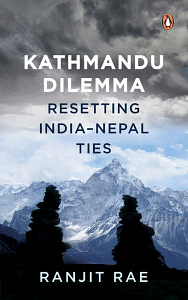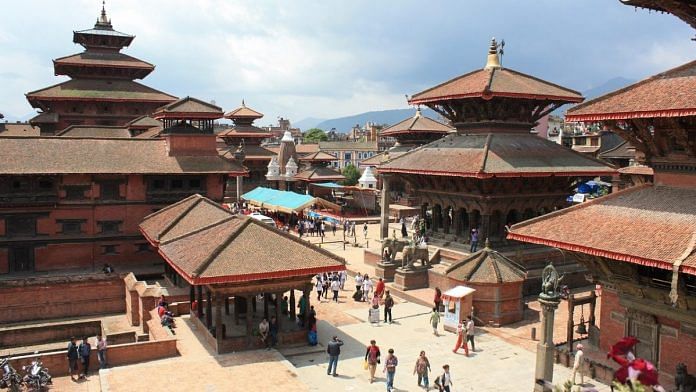As was my wont, I used to meet the top Nepali leaders from all political parties informally on a regular basis. I was meeting Madhav Kumar Nepal, a senior leader of the Communist Party of Nepal (Unified Marxist-Leninist), or CPN (UML), at his modest home in Koteshwor early in my tenure as an ambassador. We were feasting on the delicious Malda mangoes, similar in taste to the langra variety from Banaras, and speaking to each other in Hindi. Madhav Nepal looked at me and asked why India talks about bhai bhai ka rishta (fraternal relations) between the two countries. In such a relationship, there is always an elder brother and a younger one. Nepal did not want to be the younger brother. It only wanted to be friends with India, equal partner, no more, no less. Perhaps he had in mind remarks made by the late Sushma Swaraj, the then external affairs minister, who was fond of saying that India was not a Big Brother, India was an elder brother that looked after its younger kin! She was genuine in her affection for Nepal, but the Nepalese found this patronizing.
A football match was taking place at the Dasharath Stadium in Kathmandu. Nepalese are crazy about football, though cricket too is growing in popularity among the youth. This was a face-off between India and Afghanistan in September 2013. And India was at the receiving end of the crowd with catcalls and boos and shouts of Dhoti, a term which the Indian footballers would have been perplexed about. Dhoti, the dress of the Indian plains for men, is a generic term of abuse for the Madhesi community from the Terai, who are culturally and ethnically different from the Pahadis. The Madhesis are more akin to the people of UP and Bihar. The default position in the valley if there is any contest between India and a third country team, even if it is Pakistan, is to support that team!
Early in my tenure, I was travelling in the Flag Car to Hanuman Dhoka in the heart of Kathmandu. Somewhere near New Road, we saw a gathering of youth wearing tee-shirts emblazoned with the slogan, ‘Buddha was born in Nepal’. This is a historical fact; Buddha was born in Lumbini, which is now in Nepal. My personal security officer became nervous as we neared the demonstration. He said that we should immediately turn back, otherwise the situation could turn nasty. We returned. I kept wondering why there was a need for Nepal to reiterate through a public demonstration the fact that Buddha was born in Nepal. Why has this become a touchy subject in Nepal? If any Indian were to say that India is the land of the Buddha or that Buddha was born in India, there are protests in Nepal.
An innocent comment by External Affairs Minister S. Jaishankar at a Confederation of Indian Industry-sponsored webinar in August 2020 that the Buddha was one of the two greatest Indians ever, led to a storm of protests in Nepal. Buddha was not Indian, the Nepalese asserted.
Intellectuals, former bureaucrats, and even a former PM said that this was a mischievous remark. The Ministry of Foreign Affairs of Nepal released an official statement: ‘It is a well-established and undeniable fact . . . that Gautam Buddha was born in Lumbini, Nepal.’ It added that Lumbini was also the fountain of Buddhism, whatever this means. Reference was made to PM Modi’s speech to the Nepalese Constituent Assembly in 2014, where he affirmed that the apostle of peace in the world, the Buddha, was born in Nepal. The Ministry of External Affairs of India calmed the situation by saying that there was no doubt that Gautam Buddha was born in Nepal and that the EAM was referring to the shared Buddhist heritage of both India and Nepal. Nepal deeply cherishes the fact that the Buddha was born in Nepal; this is linked to its national identity. It vigorously opposes what it sees as attempts by India to expropriate this heritage.
Also Read: Why China has pinned its South Asia hopes on this train from Tibet to Nepal
Another recent incident clearly reflects Nepal’s desire to assert its own cultural identity as distinct from India. Prime Minister K.P. Sharma Oli commented last year on the birth anniversary of Bhanubhakta, the great Nepalese poet who translated the Ramayana into Nepali, that India had twisted historical and cultural facts to create a fake Ayodhya in India, and that the real Ayodhya was near Birganj in Nepal. ‘We did not give Sita who was born in Janakpur to an Indian prince but Sita was married to Ram of Ayodhya, not the one in India.’ His logic was that a prince from a place so far away as Ayodhya in India, could not have come to Janakpur as there were no means of communication and transport in those days. Though he was criticized for this comment by several leaders in Nepal, including from within his party, Oli’s statement represents an extreme nationalistic view wherein he is denying the ancient cultural and historical links that tie Nepal with India. In a similar vein, on the International Day of Yoga, 21 June 2021, Oli asserted that yoga originated in Nepal and not in India. Incidentally, Oli’s ancestors, Kumai Brahmins, would in all likelihood have migrated from the Kali Kumaon region of Uttarakhand!
What I have narrated are some anecdotes from the Kathmandu valley that reflect the mindset of the valley, home to the ruling elite of Nepal. The Valley dominates the politics of Nepal. Indeed, in the old days, it was the valley that was known as Nepal. This mindset is more prevalent in the leftist and communist forces, less so among the democratic forces such as the Nepali Congress, and not at all among the Terai-based parties. But this sentiment is growing among the Nepali youth and is something that India needs to be sensitive to.
Ours is perhaps the most intimate and hence complex relationship that exists between any two neighbouring countries. Everything that binds us—religion, culture, traditions, language, ties of kinship—also creates tension. Even the famous religious sankalp or pledge that every Hindu takes before a puja, refers to Nepal as being part of Bharatkhand! If everything in Nepal is similar to that in India, then what is it that makes Nepal a unique nation-state? Nepalese sometimes resent cultural commonalities, especially when referred to by Indians; harping on these can become counterproductive.
Also Read: What the India-Nepal Peace treaty is, and why Nepal has problems with it
What is Nepal’s own sense of its identity? How is it different from India? Given the asymmetry in size and in population, the fact that Nepal is surrounded on three sides by India, engenders a siege mentality and a desire to break away. The Nepalese also dislike and resent their utter dependence on India. Therefore, they try and fight geography! Two unique markers that Nepal has claimed for its own national identity are being the birthplace of the Buddha and home to the highest peak in the world, Mount Everest. Unfortunately for Nepal, both these markers are shared, the former in terms of the common Buddhist heritage with India, and the latter with China.

This excerpt from ‘Kathmandu Dilemma: Resetting India-Nepal Ties’ by Ranjit Rae has been published with permission from Penguin Random House.



